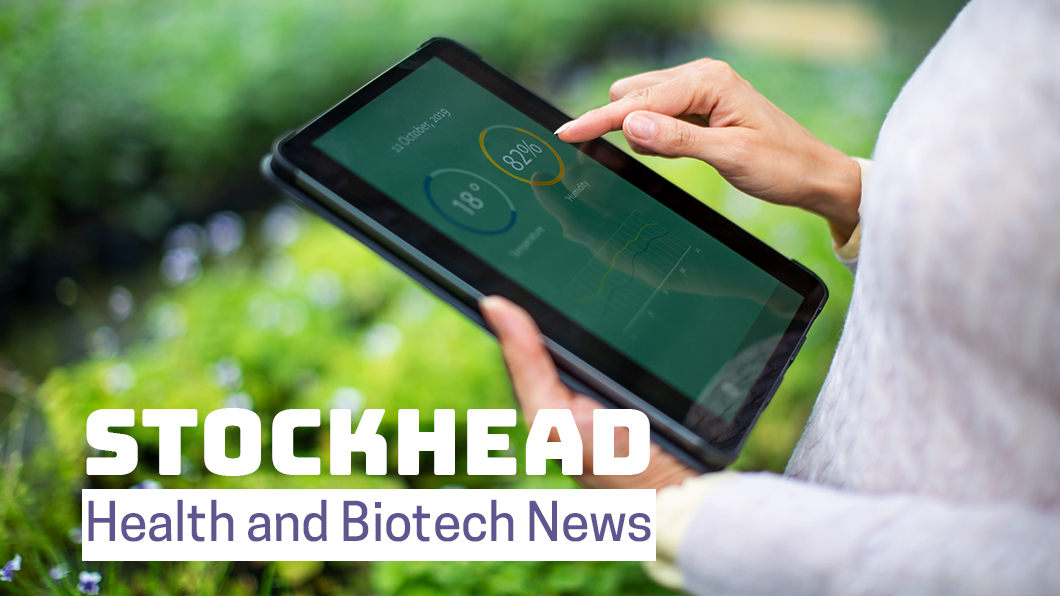Dr Boreham’s Crucible: Hydrix who?

Pic: Luis Alvarez / DigitalVision via Getty Images
That was your columnist’s first reaction on learning about the existence of the medical device development play – and we’re sure he’s not alone in his bemused response.
Small cap investors with a speculative bent might better recall Hydrix’s (ASX:HYD) former iteration as Panorama Synergy, which was the best performing stock on the ASX in 2013 after the shares soared from half a cent to 20.5 cents (a 4,000 percent gain).
Panorama Synergy’s main game was a promising tech called MEMS, or micro electro-magnetic systems (think of those sensors that activate rain-sensitive windscreen wipers).
While the company still houses MEMS expertise, Hydrix these days is more about designing and constructing medical devices and equipment.
The quiet achiever was instrumental (excuse the pun) in devising Nanosonics’ Trophon sterilizers, Memphasys’ (ASX:MEM) Felix sperm separation device, LBT Innovation’s (ASX:LBT) culture plate automation devices and Micro-X’s (ASX:MX1) portable x-ray device.
To date, the work has been done on a contract basis, but now Hydrix wants to make deeper investments in high-potential medical innovation.
“These are all fantastic devices developed in Australia,” says executive chairman Gavin Coote.
“We played a critical role in developing them, but with no investment exposure to the capital growth and upside.”
In March, Hydrix acquired the exclusive Asia Pacific rights to distribute Eatontown, New Jersey Angel Medical’s Guardian system, the world’s first implantable device to warn the wearer of an imminent cardiac arrest (heart attack).
The rights include Australia, Singapore, Japan, Malaysia and Hong Kong – but more on that later.
Shareholders are now being asked to participate in a $3 million rights raising (and placement) to pay off debt and bolster the balance sheet.
Hey, sexy lady!
Panorama Synergy emerged as an ASX entity in mid-Noughties to tap the hot MEMS field.
The company went by the ASX code PSY and the joke at the time of the stock’s 4,000 percent run was that it was a bigger hit than South Korean singer Psy’s ‘Gangnam Style’ (18 million You Tube views and counting).
Inevitably, the story became over-hyped and the MEMS work never evolved from early stage research.
In September 2017, the company acquired the private Hydrix Group, builder of the aforementioned medical devices as well as industrial and defence related systems.
The purchase of this “crown jewel” was by way of $2 million of cash and 50 million Panorama shares.
The company changed its name to Hydrix – and its code from PSY to HYD – in November 2018.
Mr Coote became a director in 2017 and then executive chair in January this year, with CEO Peter Lewis “transitioning” to head of corporate development.
A seasoned corporate wheeler and dealer, Mr Coote spent 12 years in the US where he took a Nasdaq-listed software house, Platinum Technology, from $US100 million ($A142 market cap) to $US1 billion via 45 acquisitions.
A Melbourne lad, Mr Coote eventually moved back to Australia where he became immersed in a family office, performing private equity-style investments in bricks-and-mortar companies.
He was also involved in privatizing the Melbourne Rebels rugby team before Rugby Australia bought back the franchise.
Hydrix consists of a team of 65 engineers beavering away in a facility at Mulgrave, in Melbourne’s south east.
“We have put together a business with distinct potential as distinct from the past when it hadn’t generated a dollar of revenue or product,” Mr Coote says.
At the heart of the company …
While the Hydrix Ventures arm aims to pick winners in medical innovations, Hydrix Medical is focused on cardio-vascular products.
One client, Bivacor of Houston, Texas, has been working on an artificial heart that eventually could replace human tickers. Hydrix has been contracted exclusively to develop the control systems in a prototype.
Mr Coote says cardio-vascular disease remains the biggest killer, afflicting 14 percent of the population and accounting for 31 per cent of deaths.
“The heart beats 100,000 times a day, or three billion times a year,” Mr Coote says. “It’s a busy organ.” (It’s 36.5 million a year, actually).
As for the Guardian, the deal with Angel Medical involves Hydrix building the Guardian upgrades under a multi-million-dollar service arrangement. Pace-maker-like, the Guardian detects changes in the heart’s electrical conductivity.
Hydrix has also invested $US1 million for a 4.6 percent stake in Angel Medical, payable in a mix of cash and services.
The third component is an exclusive distribution rights to eight Asian Pacific countries, including Australia.
Mr Coote says the heart device can detect a pending episode 40 per cent better than patient recognized symptoms alone. Almost half of attacks have no discernable symptoms, such as the one that this month afflicted former TV bigwig (and occasional James Packer sparring partner) David Gyngell.
Mr Coote estimates the patient market in the company’s distribution zone at 500,000 a year. These patients have had a coronary episode already, or have co-morbidities such as diabetes or dodgy kidneys.
He says undiagnosed secondary attacks are likely to increase during the coronavirus epidemic, because patients have been deterred from going to their normal checkups.
Seal of approval
The Guardian device has been approved by the US Food and Drug Administration or, technically, re-approved after Angel Medical installed an improved battery that lasts twice as long. Hydrix also plans to seek approval from the local Therapeutic Goods Administration and Singapore’s Health Sciences Authority.
In the US, about 1,000 implants have been done as part of clinical trials, with a further 250 (containing the new batteries) due by the end of 2020.
“The benefit of that is we won’t require clinical trials to be approved, so that’s a way to fast-track in the Asia-Pacific,” Mr Coote says.
In the meantime, early access schemes allow cardiologists to carry out implants ahead of approval.
A Singapore heart doctor planned to implant five devices, before Covid-19 intervened.
In Australia, the company is working with a cardiology network to initiate implants under an authorized prescriber scheme, which is similar.
In the US, the implants (and the one-hour surgery) will be reimbursable. In Australia and Singapore, it will be patient pays, at least for the time being.
Meanwhile …
Medical devices aside, Hydrix is also expert in other mining and industrial applications, including water and sewerage management.
In the defence sphere, the company provides engineering services for the Joint Terminal Attack Controller training system.
Hydrix has also devised an electro-magnetic pulse electronics disabling (jamming) system.
For more information, consult your nearest military buff.
“Defence is a smaller piece but we have done some important novel work there in the past,” Mr Coote says.
In the medical technology arena, Hydrix is also involved in developing devices for orthopaedics, hip replacements and traumatic brain injury monitoring.
In each case the company will seek an “aligned interest”. That could mean services in kind for equity, or a capital investment.
Whatever the case, the company will avoid being “all things to all people” and will be pragmatic in what it pursues.
Finances and performance
Having secured $1 million in a placement, Hydrix is handing out the bowl for $2 million in a one-for-three, fully-underwritten rights issue (with one attached option for every three shares, exercisable at 12 cents).
The raising is struck at 7.5 cents per share, a hefty 25 percent discount on the immediate closing price of 10 cents a share.
Last year, Hydrix also raised just over $2.6 million, via a placement and share purchase plan.
Hydrix gleaned $3.82 million of revenue in the March quarter, up 10 percent, mainly from its service contracts and expects to have turned over $14.7 million in the financial year to June 2020.
That number is 10 percent higher than previously, but slightly off previous guidance of $15 million because of a Covid-19 related slowdown in the June quarter.
And earnings? Glad you asked.
Hydrix posted a slim cash operating surplus of $40,000 in the March quarter and still expects a “cash operating profit” for the full year to June 2020. But the Covid-19 disruptions mean that the current year to June 2021 is likely to be break even only, on lower revenue.
The company derives most of its revenue from the services side of the business, but expects product revenue (from Hydrix Medical) eventually to outstrip services income.
As a guide to the Guardian potential, in the US the devices sell for $US8,500 to $10,000 ($A12,300 to $A14,500).
Pricing in Australia has not yet been set, but it’s likely to be in line with the cost of pacemakers, which sell for between $US8,500 and $US12,000.
Based on five percent market penetration, the company estimates annual turnover of $274 million in its Guardian distribution catchments, or $40 million for the initial geographies of Australia and Singapore.
The company held cash of $2.1 million as of the end of March but also had $6.75 million of outstanding debt.
These borrowings are provided by three shareholders: $1 million from ELG Nominees (Joanne Bryant), $1.75 million from John W King Nominees (John King, who owns 20 percent of the company) and $4 million from Pure Asset Management Pty Ltd ($750,000 of the equity raising proceeds are earmarked to reduce this debt).
Late last year, the company carried out a one-for-10 share consolidation. Accounting for this, Hydrix shares have traded between $1.30 in January 2018, and nine cents in April 2020.
Dr Boreham’s diagnosis
Mr Coote says Hydrix’s higher purpose is to “enhance the health and wellbeing of a billion lives”.
Like Bob Hawke’s famed “no child shall live in poverty” pledge, this of course is an aspirational goal.
Hydrix possibly could build and market a device under its own steam, but for the time being securing distribution rights is a de facto way of eking value from the intellectual property.
The company is also open to licencing and royalty fee arrangements.
“We are looking for ways to leverage product development to gain an unfair advantage”, Mr Coote says.
“… the research and development capability here (in Mulgrave) could support a $100 million a year operation. As time goes by and the company gets more scale and cash flow, our ability to leverage that capacity is definitely on our radar.”
Unlike South Korea’s Psy, Hydrix won’t storm to overnight fame but there’s a good chance it won’t be known as “Hydrix who?” in the not too distant future.
“We are pretty humble but we have an aspiration to build something special, a great Aussie tech company,” Mr Coote says.
“We are giving it a red-hot crack.”
Disclosure: Dr Boreham is not a qualified medical practitioner and does not possess a doctorate of any sort. He also never mastered Gangnam Style on the dance floor. This article first appeared in Biotech Daily.
UNLOCK INSIGHTS
Discover the untold stories of emerging ASX stocks.
Daily news and expert analysis, it's free to subscribe.
By proceeding, you confirm you understand that we handle personal information in accordance with our Privacy Policy.








